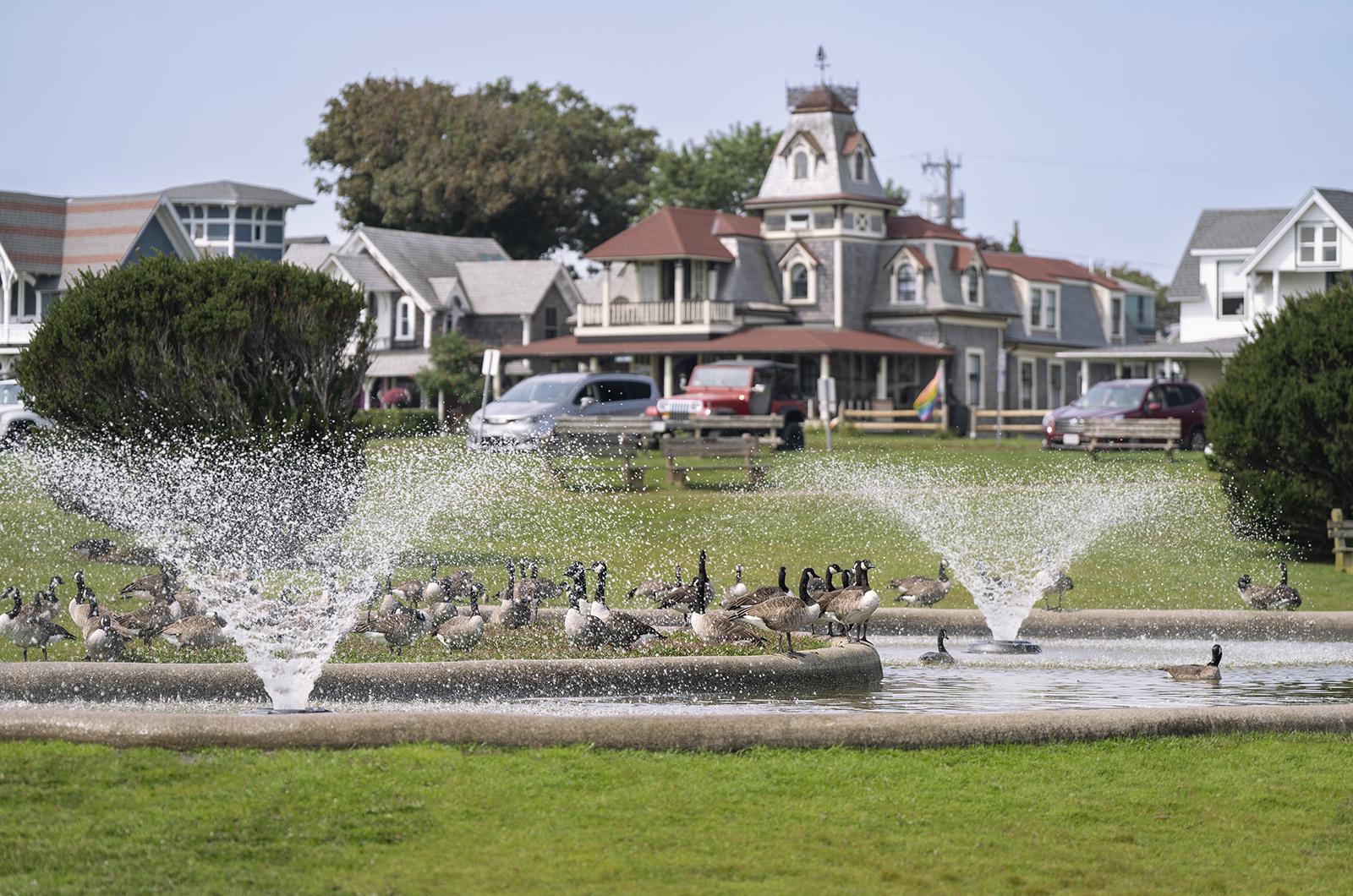Even though summer is officially over my mind keeps taking me back to a summer like I’ve never seen on the Vineyard in all the years I’ve visited as a guest and as a seasonal resident. And when I think back over this summer, some things stand out—good, not so good and, well, curious, not least about the enormous crowds of people from all over the world.
Walking down the redesigned Circuit Avenue, for instance, I encountered three women who were lost and who didn’t much speak English except for them saying several times “Bus, Bus, Bus.”
I didn’t speak their language but managed to communicate by using my fingers to point towards the bus stop near the ferry. I was pleased when they took off in the direction in which I was pointing, walking fast and chatting rapidly.
As the summer continued and the crowds kept coming, I wondered what had brought everyone not only to Oak Bluffs but to other parts of the Island, leading me at one point to consider if it had been the international attention the Vineyard received in the wake of the migrants sent here last September by the Florida governor and the wonderful, embracing way in which Vineyarders turned out to help them.
I have to confess I kept my journalistic instincts in check this summer, not least because I am in the vulnerable category of senior citizen now and therefore continue to wear my mask in crowds and, well, because I also had a lot of work on my plate, as well as on my computer. But hopefully there were others who had conversations with the tourists about what brought them to our beloved Island.
And yet, one long time Vineyarder, Lloyd Trotter told me: “People are looking for the Vineyard vibes but they don’t have the Vineyard values.”
But maybe he and others with Vineyard values will share their stories as I do. My husband and I are seasonal residents of Oak Bluffs but our first visit to the Island took place in the late 1960s. I was immediately enthralled — from up-Island, where we had been invited for a few days, to Oak Bluffs, which I had been hearing about since my high school years in Atlanta, where a classmate’s father took his family every year. At the time, Oak Bluffs was one of the few places Blacks could go since beaches all along the Eastern seaboard were segregated.
When we finally got to Oak Bluffs and soon the Inkwell Beach, my journalistic instincts took over and I called my editor of the New York Times and convinced him to give me a few more days so I could write about “my discovery.”
And sure enough, the piece made a big splash in what was then called The Second Front.
But back to these days and the crowds, which were not the only change I noticed. Some of this may have been due to the pandemic, such as the multitude of young parents with infants either on their backs or in strollers — it seems at least a few good things happened when people were confined.
But the pandemic also led to a scarcity of workers and the increased pressure this put on those who were either new to the work or who were close to being overwhelmed by more work than usual. To be sure, there are stores where business owners and their employees are as welcoming and helpful as ever, but in far too many instances I tried hard to understand what was going on when at a checkout counter the attendant wouldn’t look up except to accept my money or my credit card — and sometimes not even then.
I have to admit, in one instance I was so annoyed I told the person behind the counter that I was disappointed in the dismissive attitude when I bid that person a good day — the only time the person looked up, but even then, dismissively. But I also know that the pandemic has created a lot of problems most of us have never faced. And although the summer is over, and thankfully the long lines of cars to get from one place to another have disappeared (at least most of the time), the pandemic has not. There is no telling how long it will be with us or how serious it could get. I will be among the first in line to get the updated Vax and RSV and Flu shot, hopefully at Martha’s Vineyard Hospital.
But I hope it’s not an idle wish that even as we Vineyarders (yes WE) experience new people of all races, creeds, colors and sexual orientations, we will all help keep our Island a welcoming place. And yet recently ugly, racist signs were put up in Oak Bluffs by who knows.
And we shouldn’t forget how there was no spirit of welcoming reception given to the original inhabitants of the Island — the Wampanoags — by the arriving colonists. We all have work to do. Thanks goodness the Wampanoag people are reviving and teaching their history, including reviving Noepe, the original name of the Island, and also how to help keep the land as it was created to be. We may not all be Wampanoags but I believe we can learn from them, and hopefully give back in whatever way we who love this Island are able to do.
Charlayne Hunter-Gault is an award-winning journalist, lecturer and author, whose latest book, My People, brings together 50 years of her reporting on people of color and others who supported them. She makes her home in both Martha’s Vineyard and Sarasota, Fla.




Comments (7)
Comments
Comment policy »